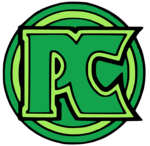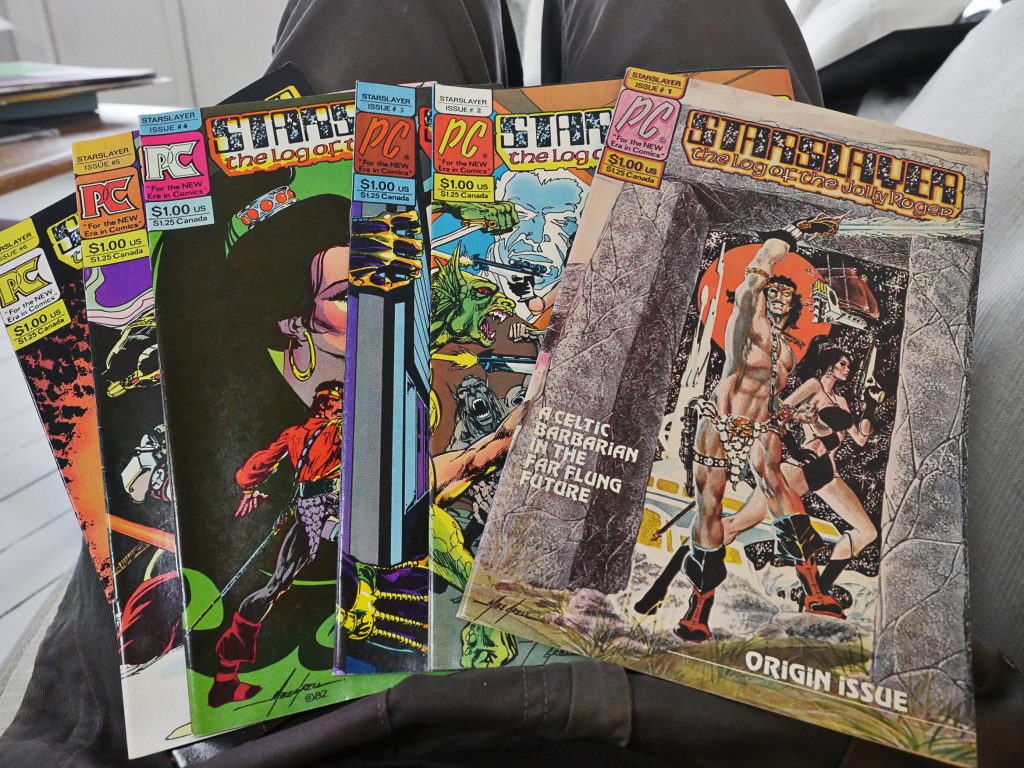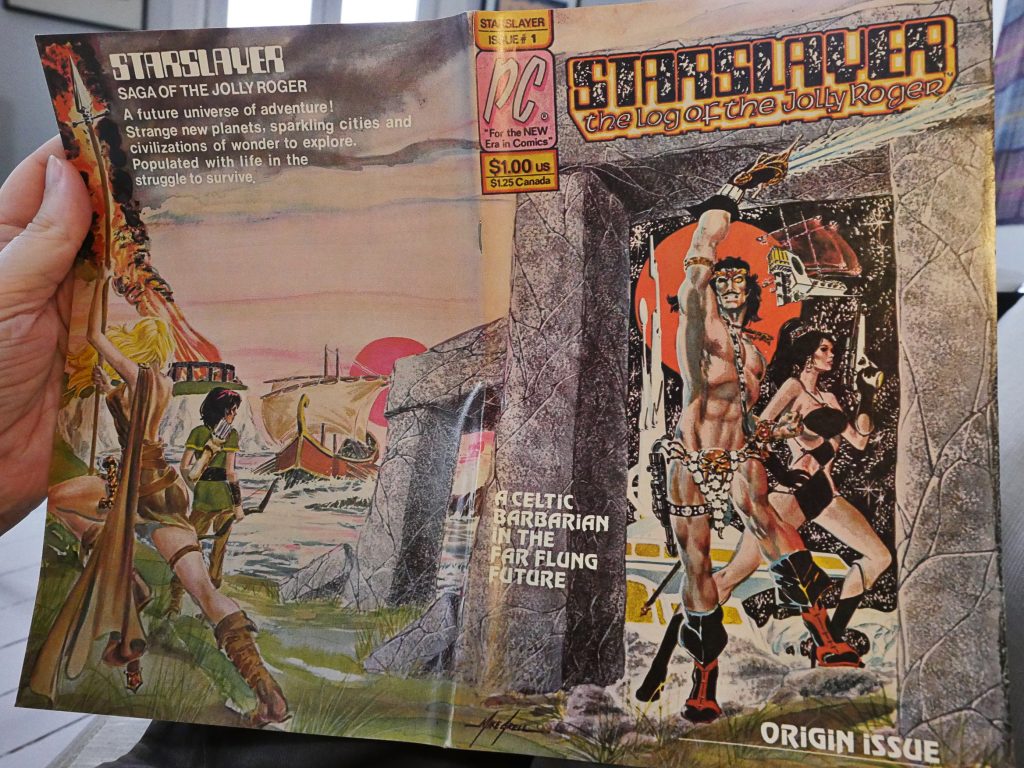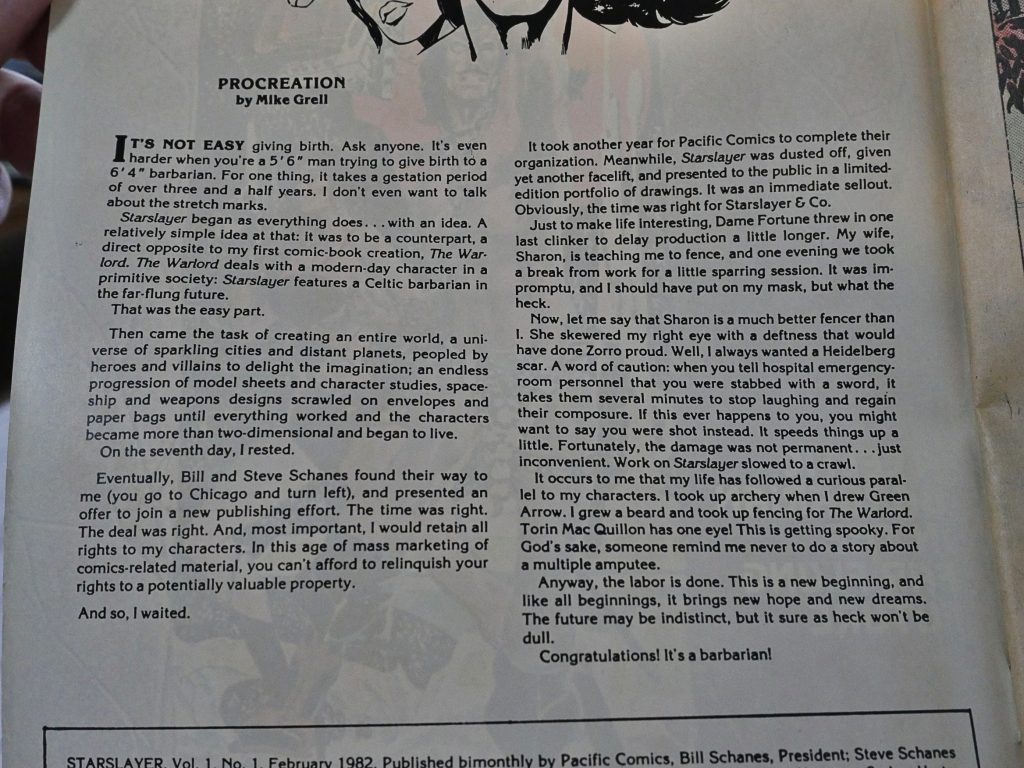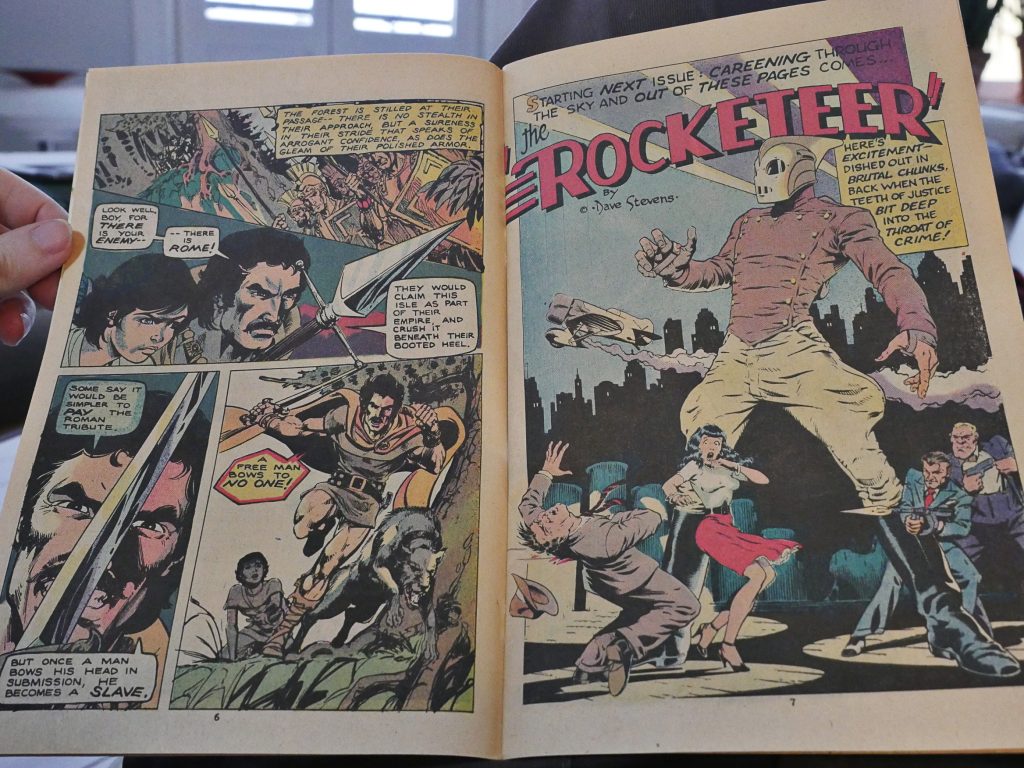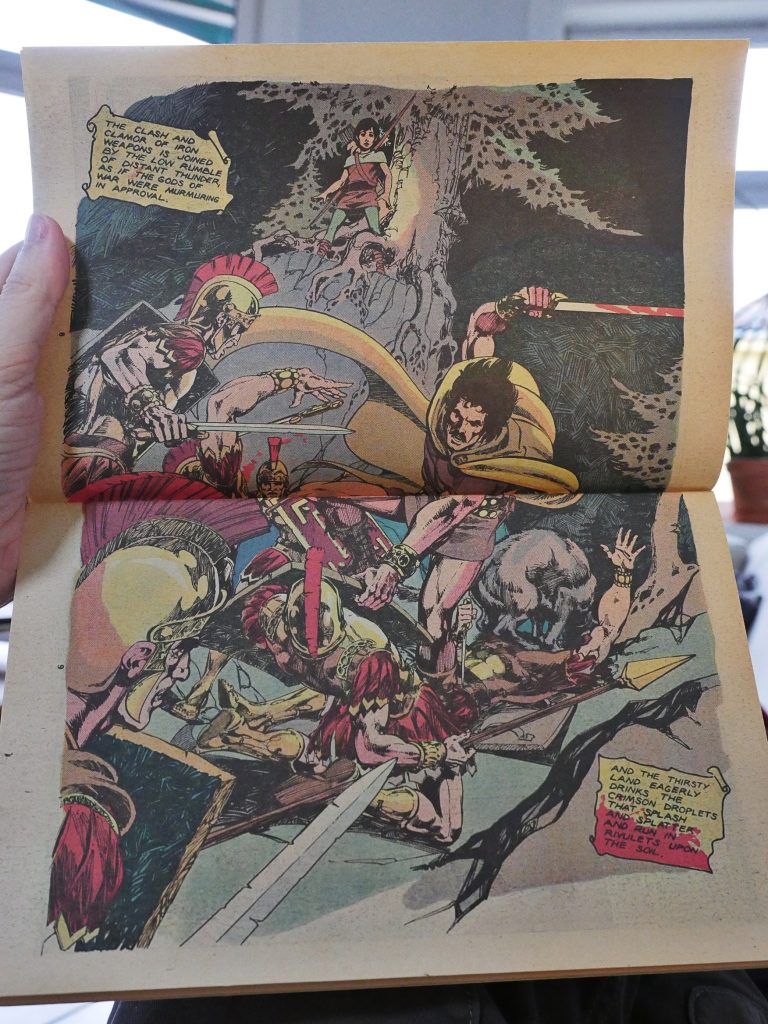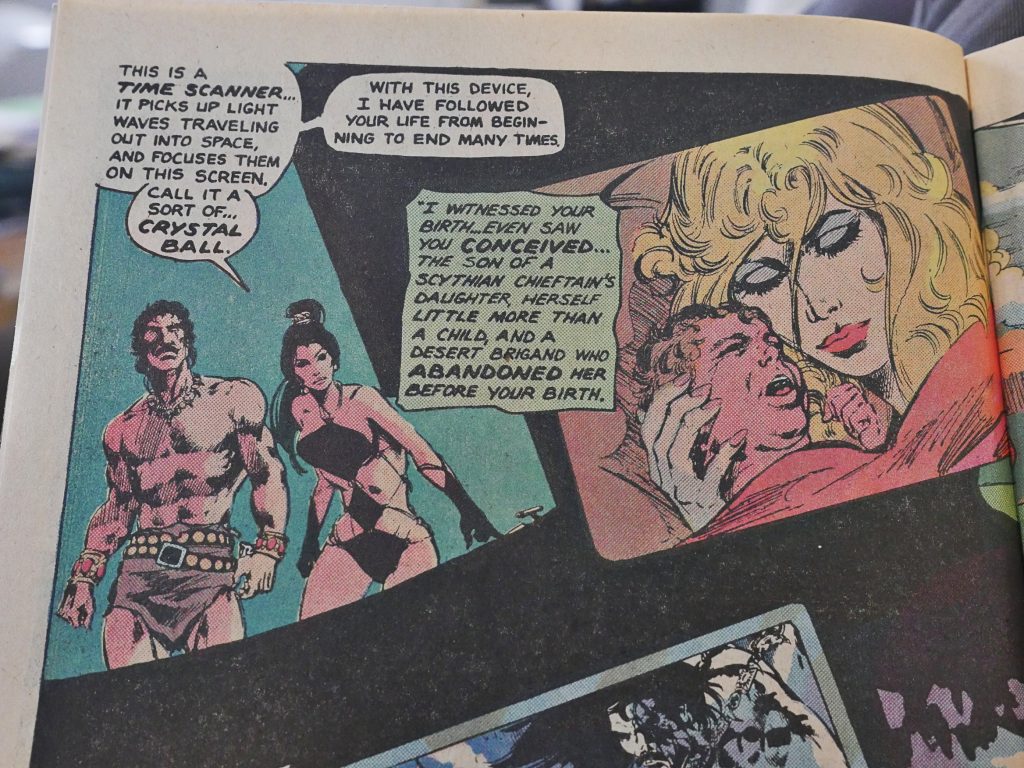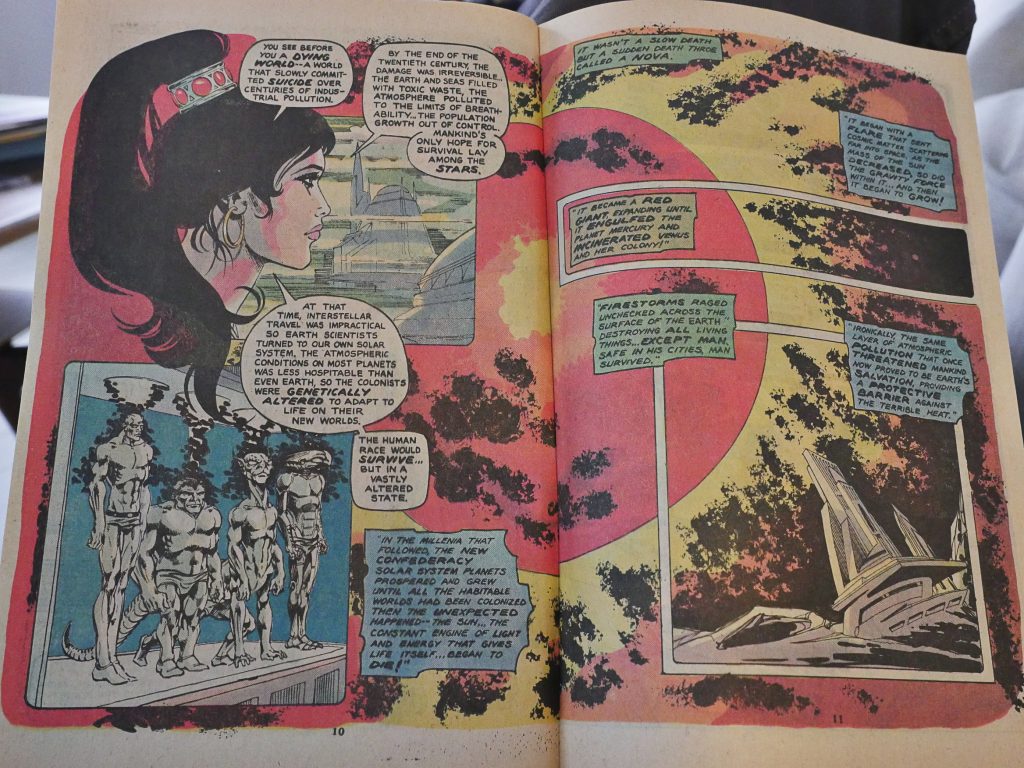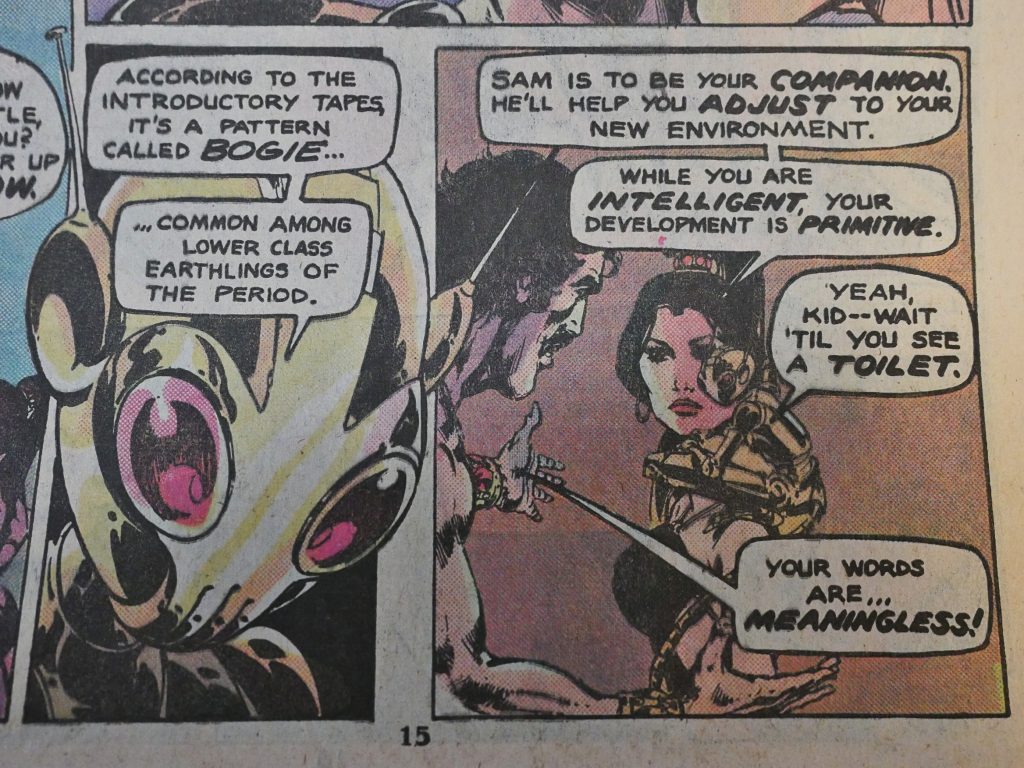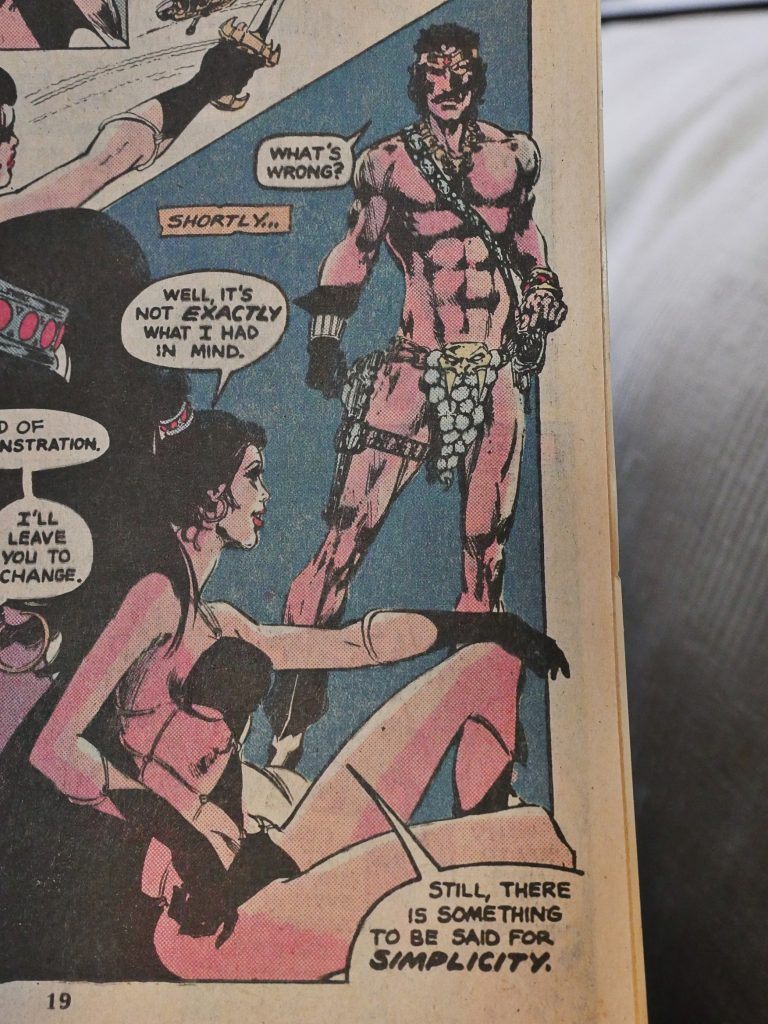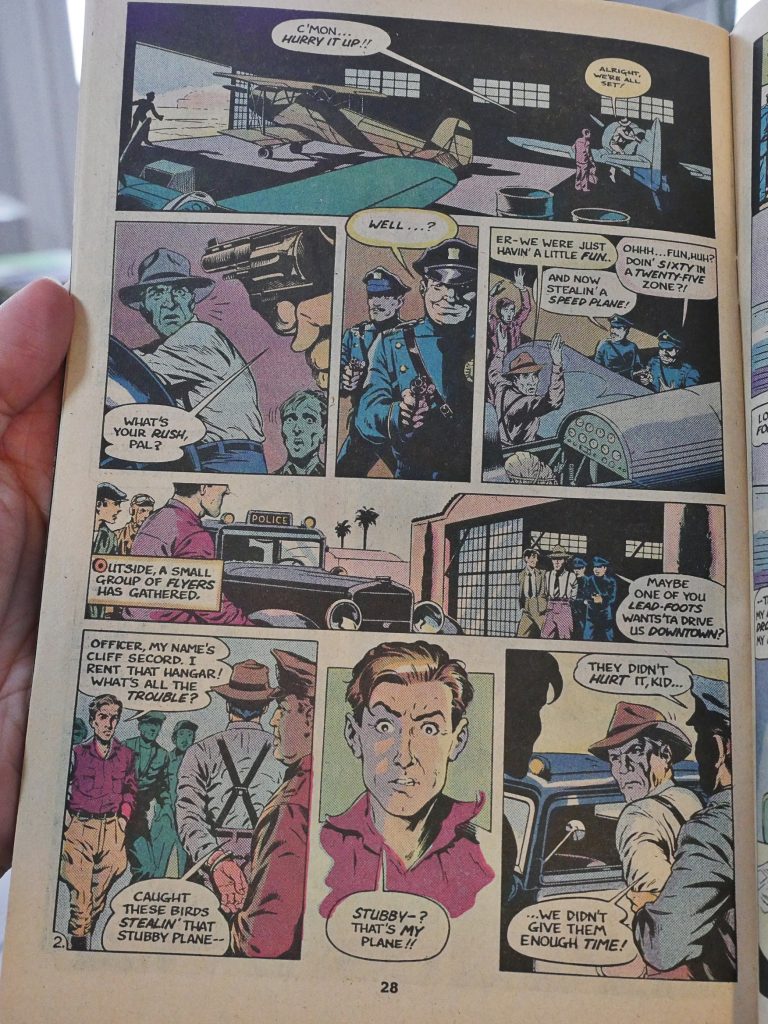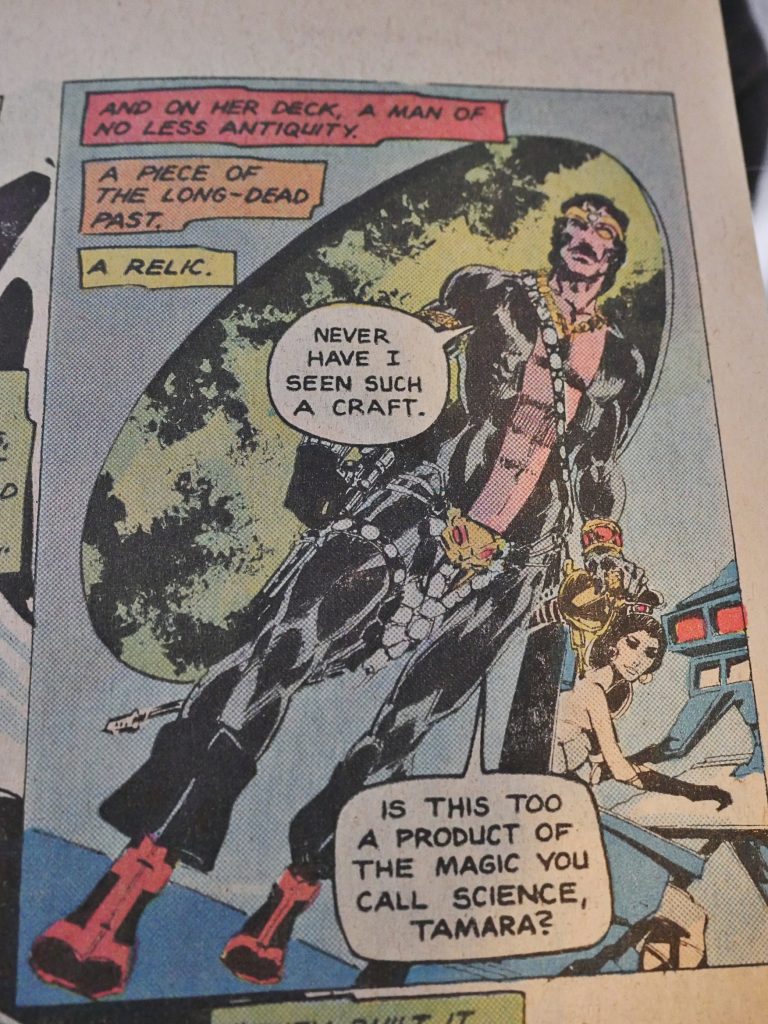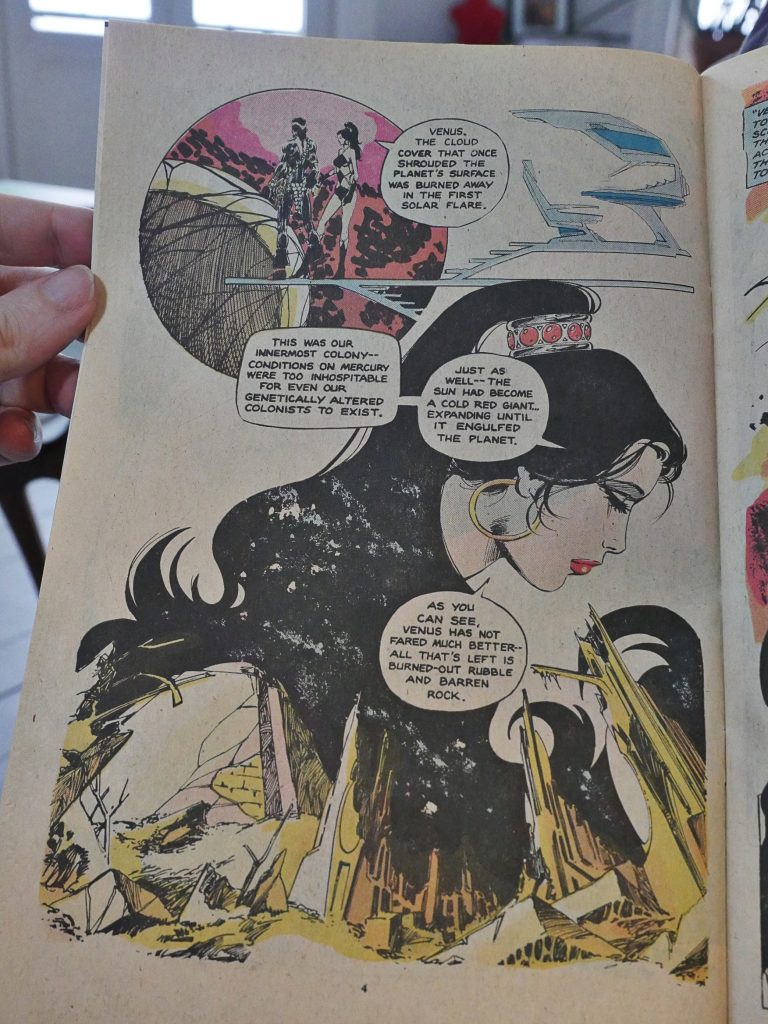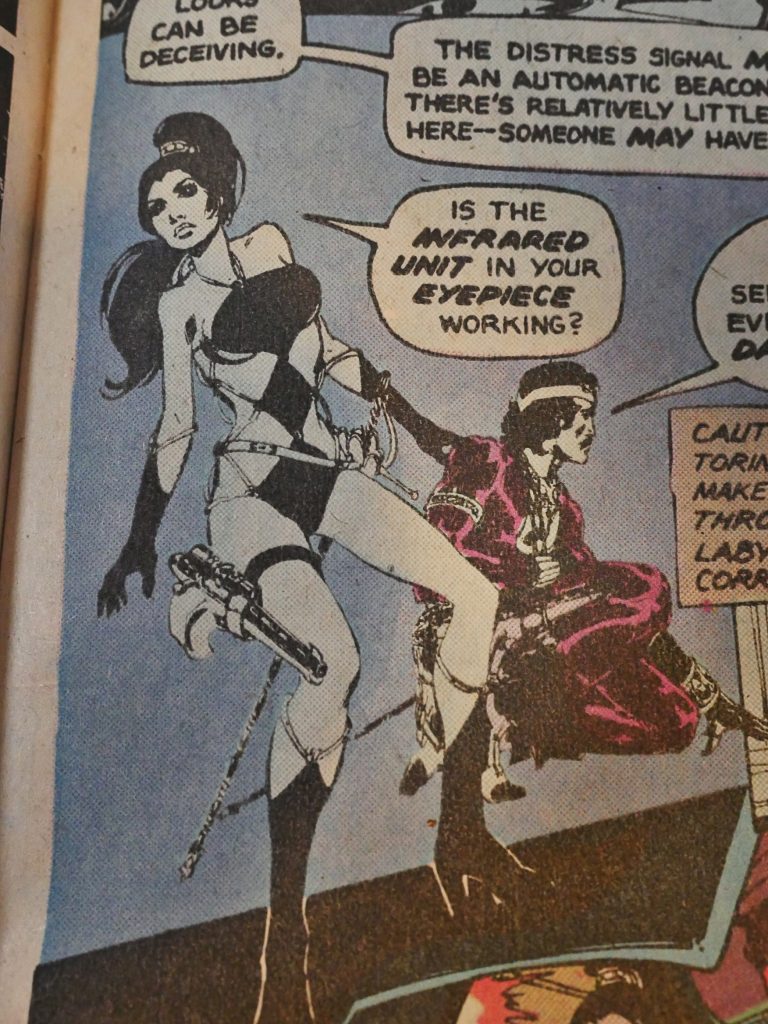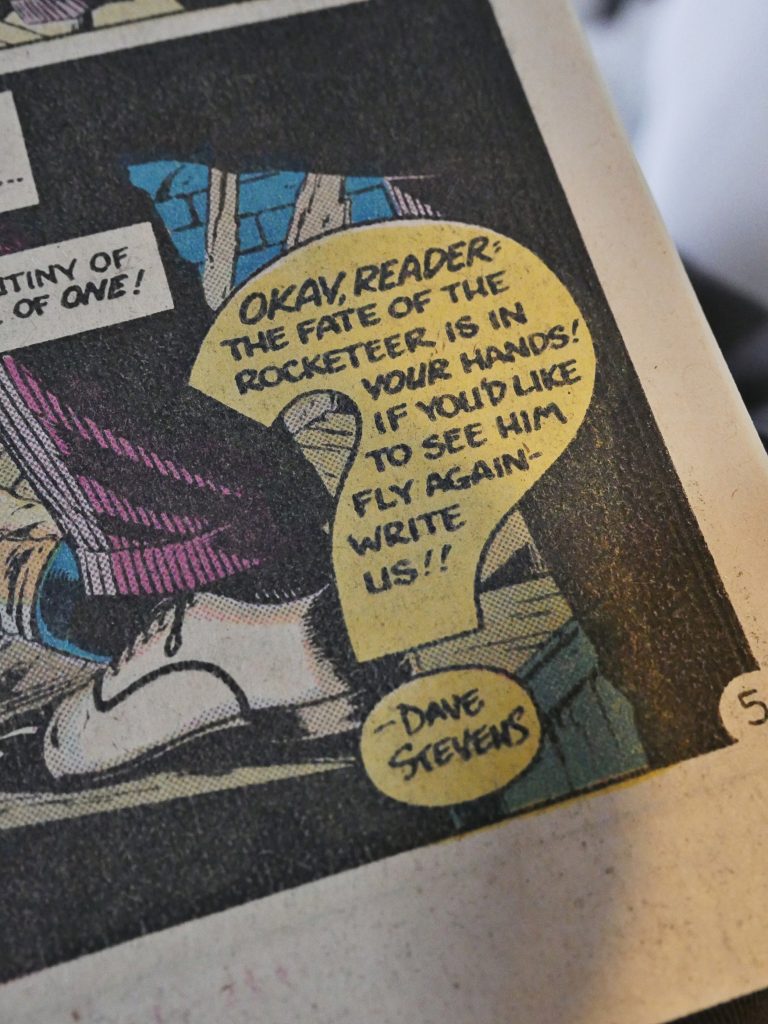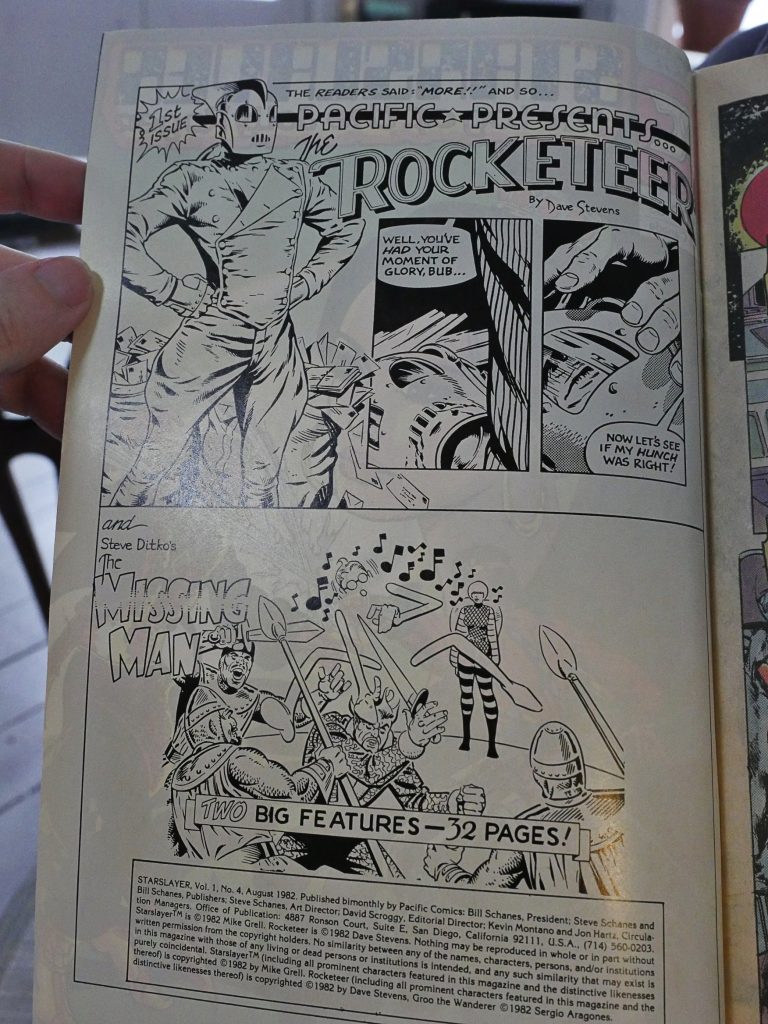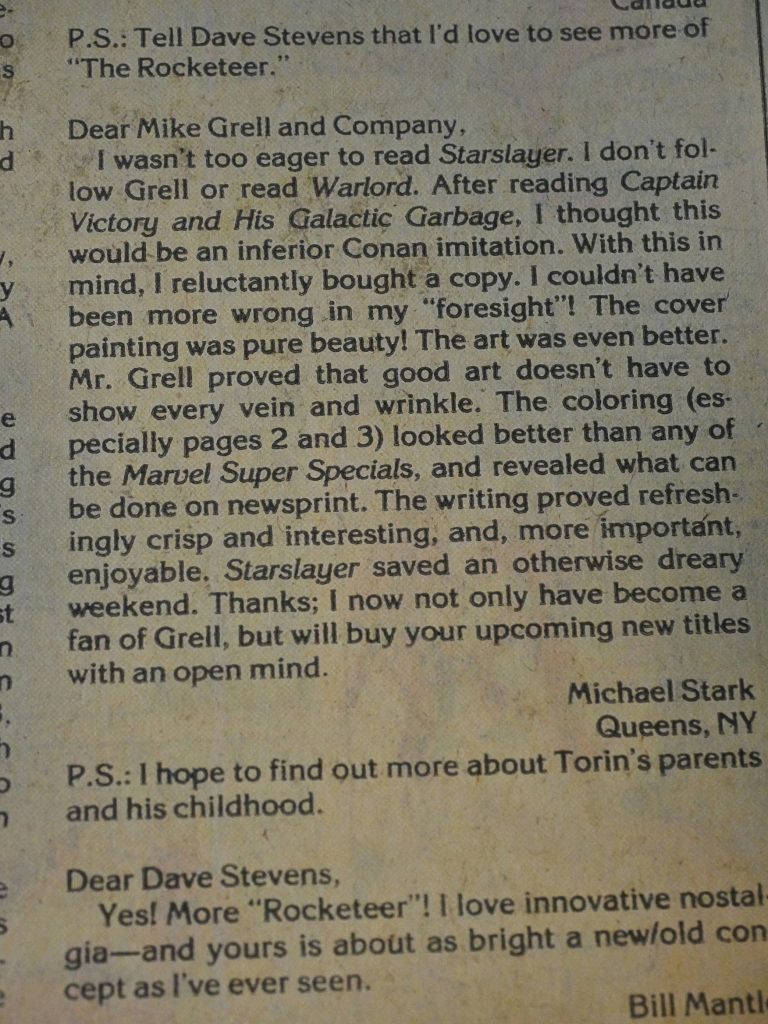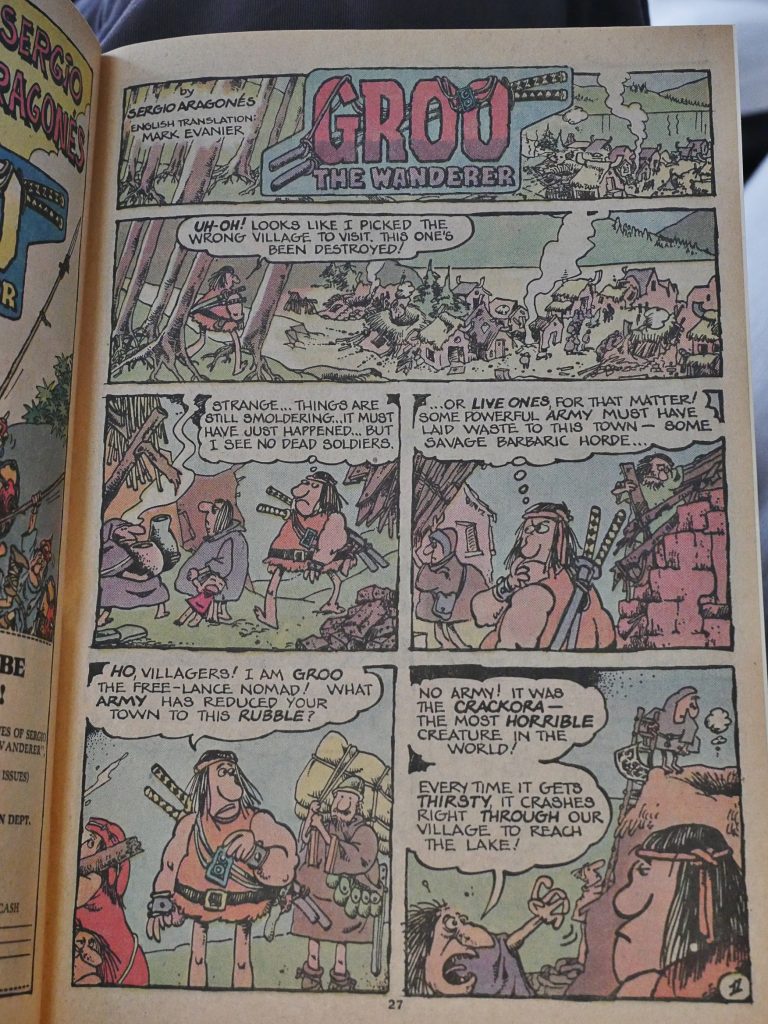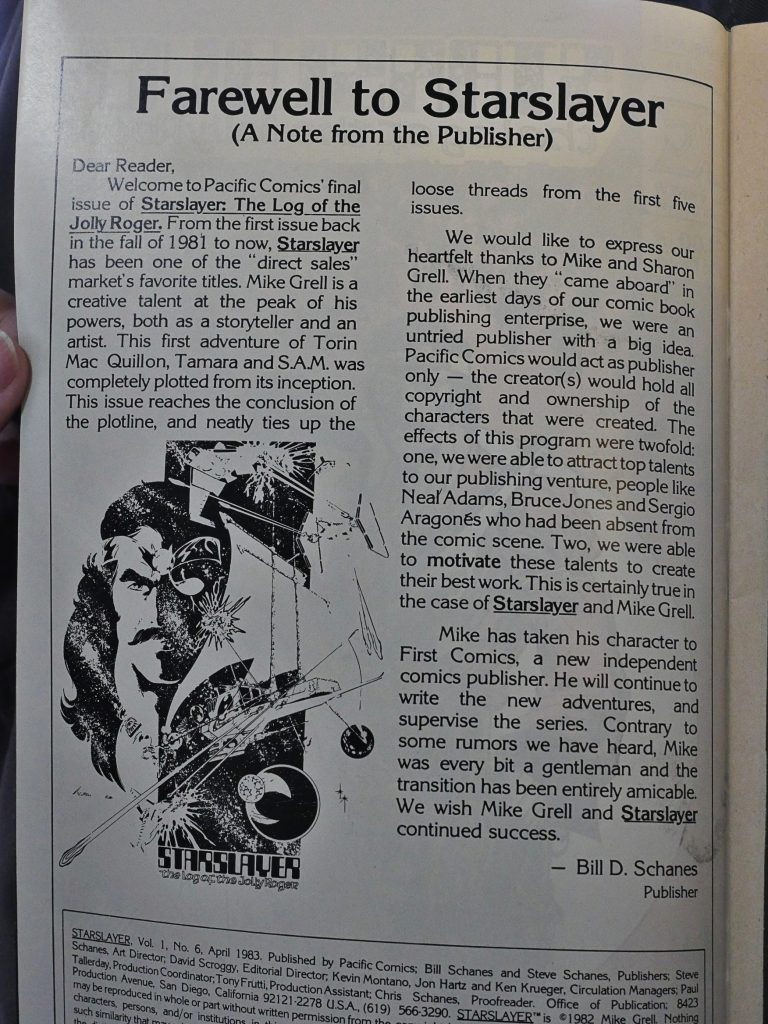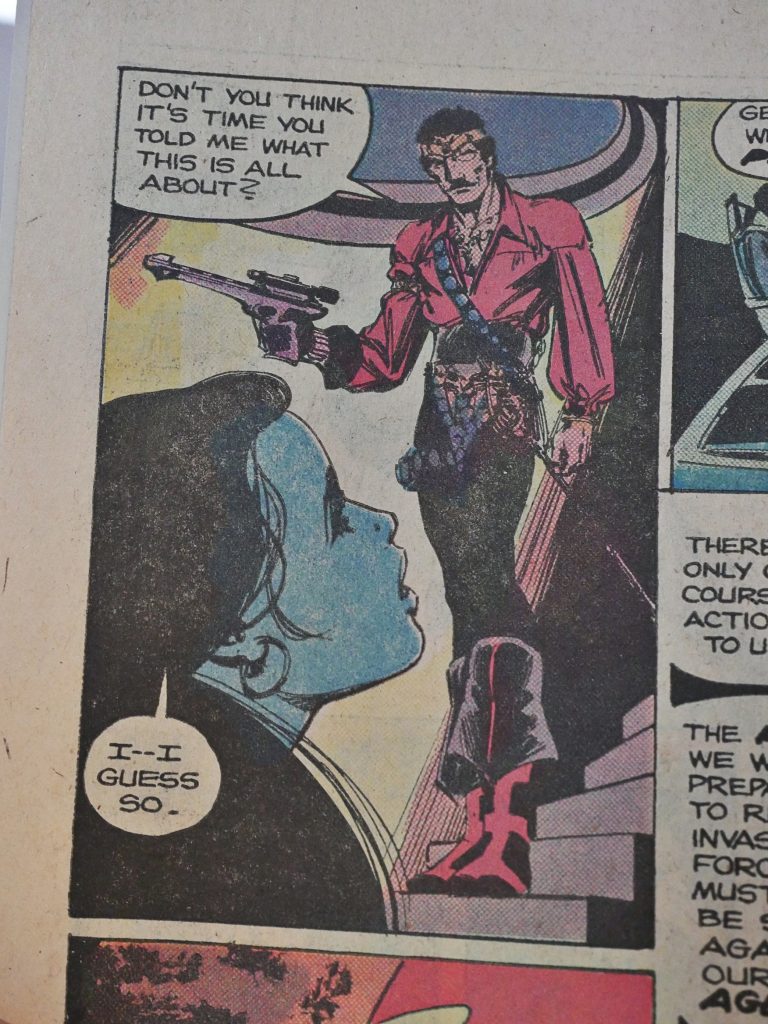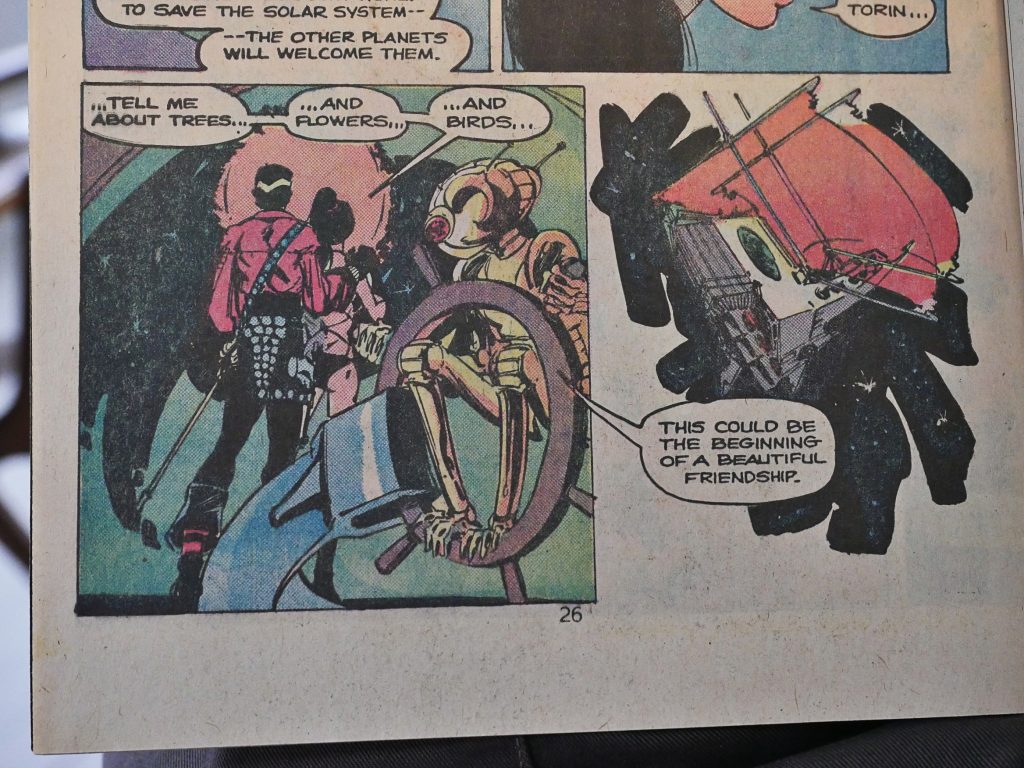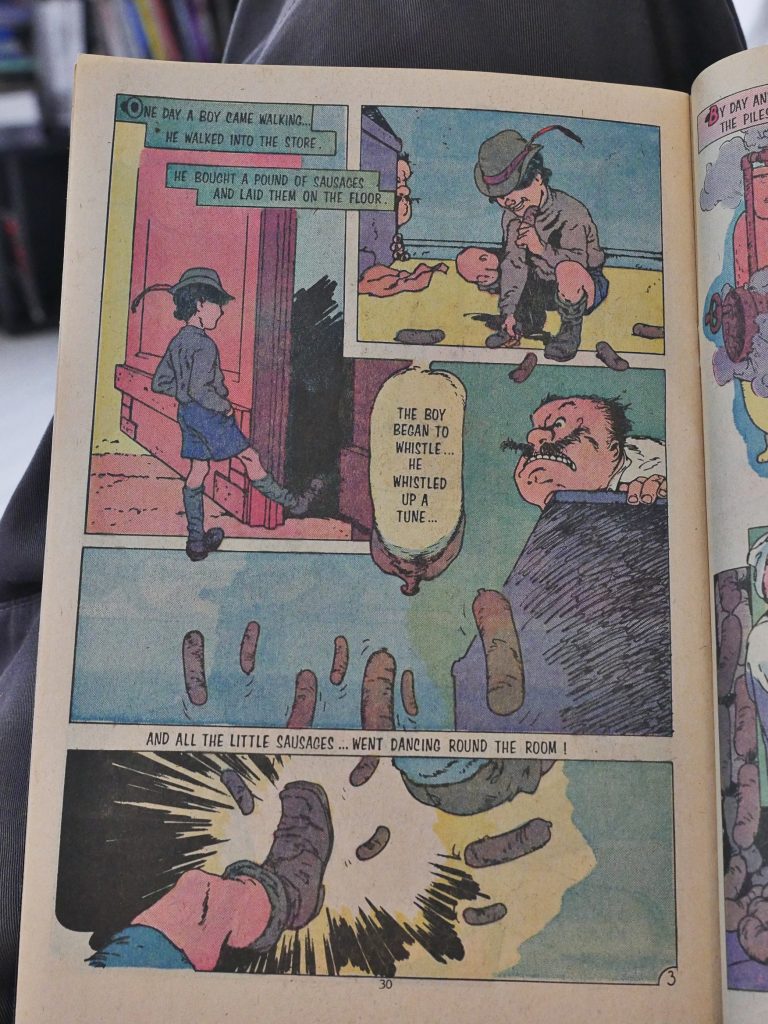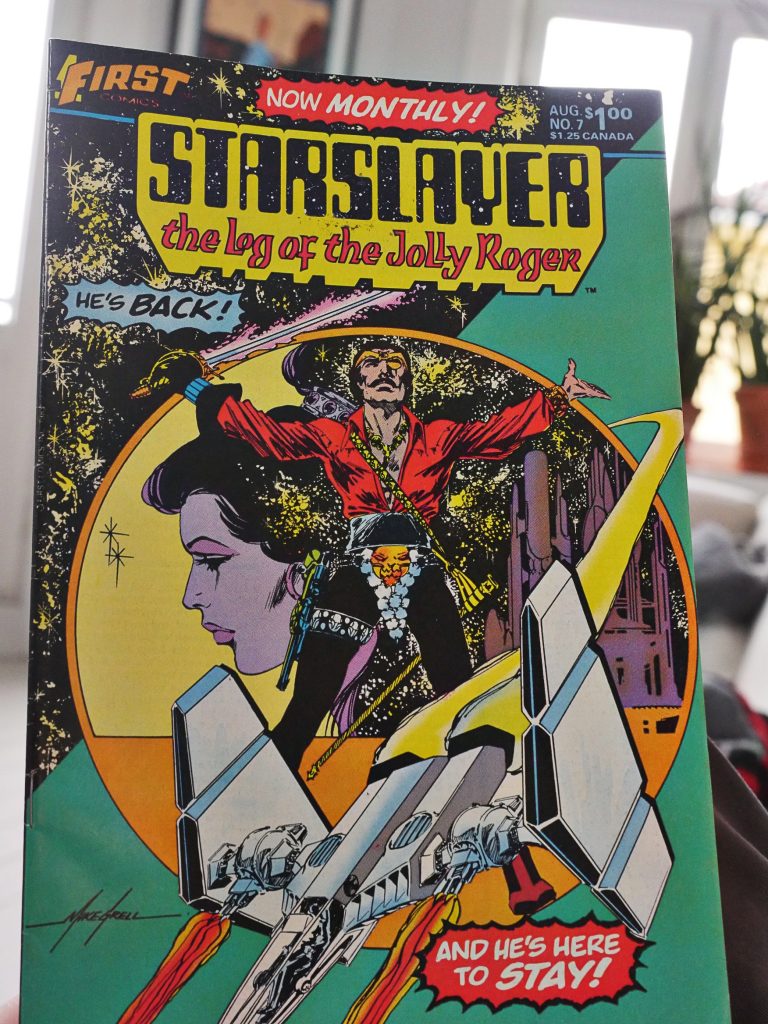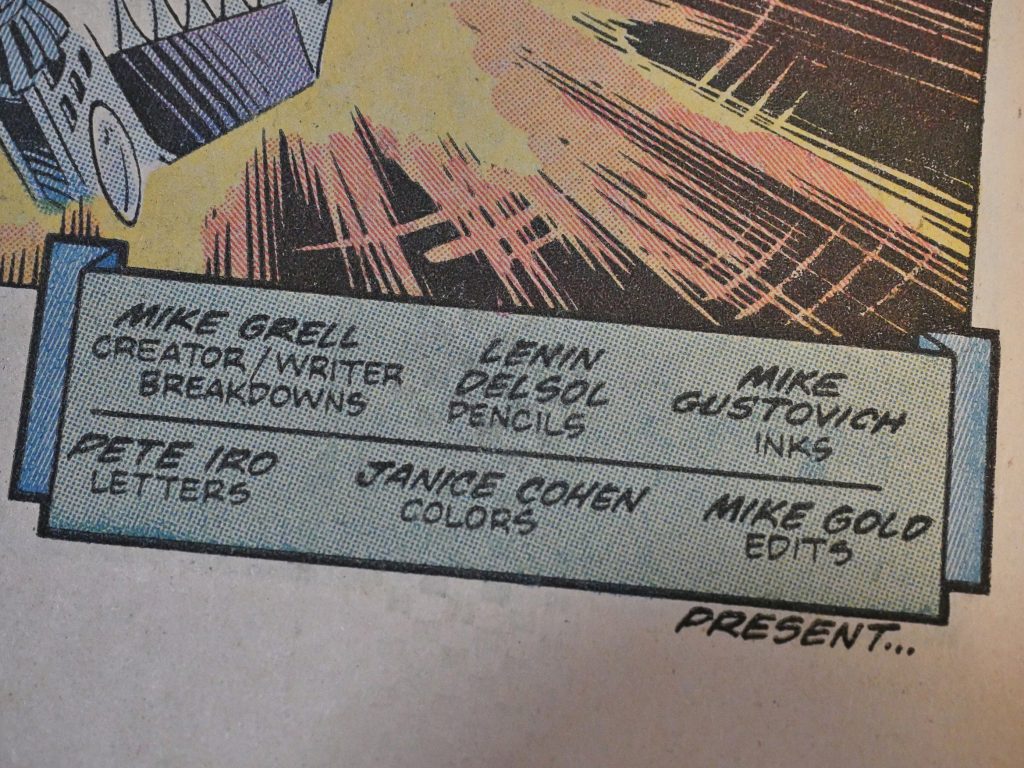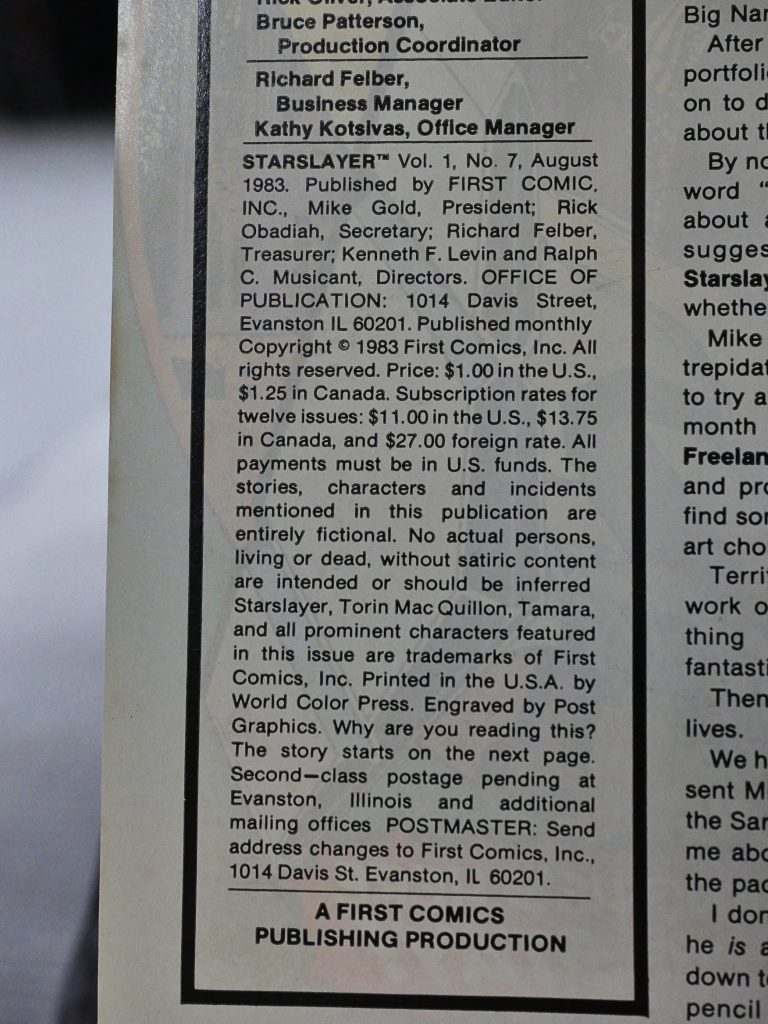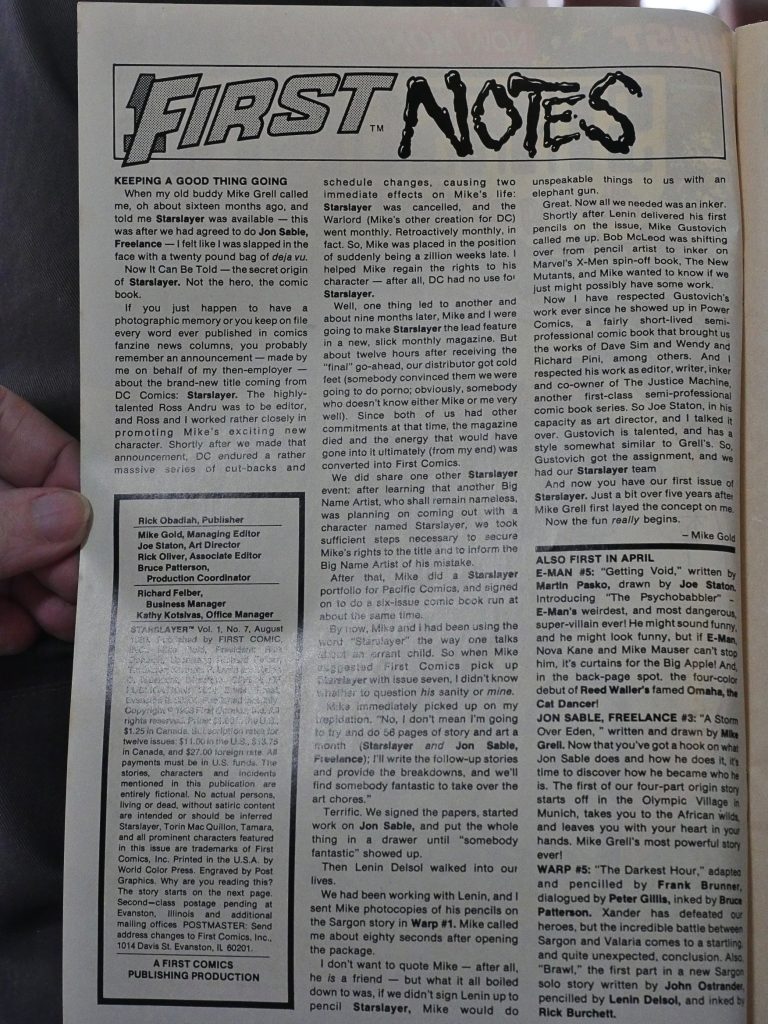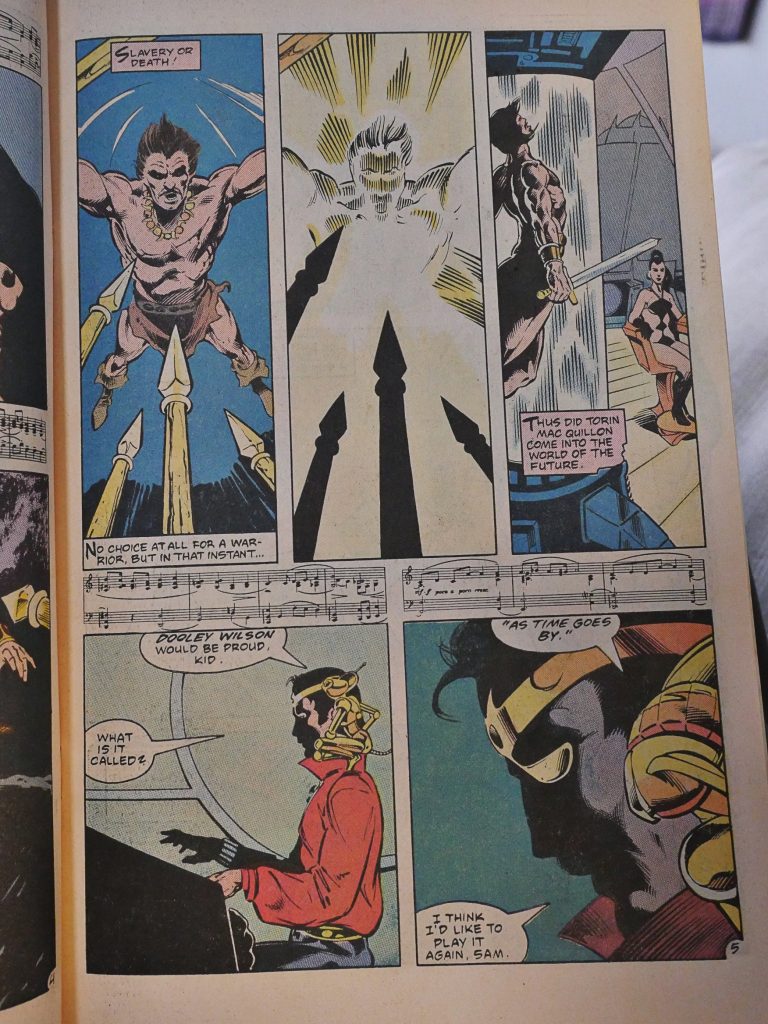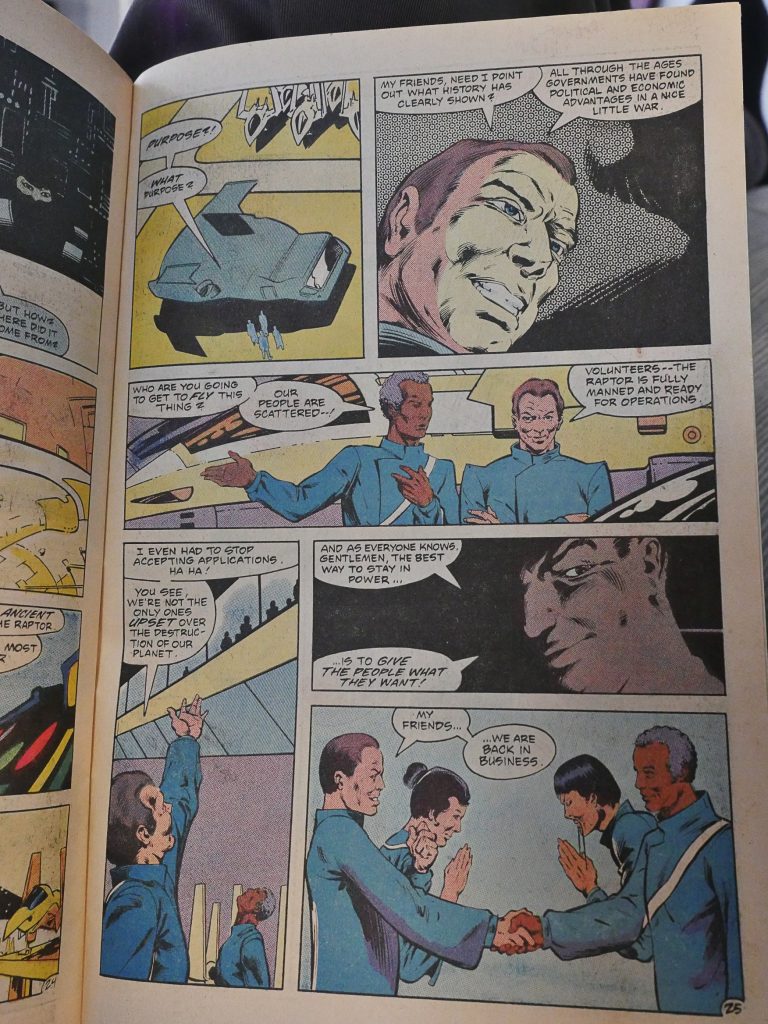Starslayer (1982) #1-6
This was not a series I read as a teenager. Mike Grell wasn’t really on my radar, even though I later realised that he was the guy who drew those 70s Legion of Super-Heroes comics that I was fascinated by as a child. There are scenes from those comics that are still etched in my mind.
But this didn’t really seem that appealing to me, as I’ve never had much taste for barbarian stuff, which is what I assumed it was, despite the “Starslayer” name.
Grell explains in the introduction the concept: He’d created a character called The Warlord, which is about a guy going into the past, so now he’s doing something totally different, namely a guy from the past going into the future.
Distributors must have liked the idea:
Mike Grell’s Starslayer #1 had initial orders over 140,000
As with Captain Victory, this is pretty badly printed, and is on newsprint. Grell likes drawing lots of itsy details, and it’s all pretty muddy and ugly here. And while there’s no ads in these comics, Pacific is using the Marvel/DC standard of dropping house ads into the proceedings at random intervals, which kinda disrupts the flow.
Hey! Sideways double page spread fight scene! Celt versus Romans!
The storyline is pretty straightforward (Our Hero wants to protect his village against the Roman invasion, and then at the end of the first issue he’s pulled into the future (oops spoilers)). But Grell hasn’t really worked out the kinks of his storytelling: The panels and speech bubbles often lead you astray in what reading order you’re supposed to use, and it’s sometimes even unclear who’s saying what.
It makes for a somewhat choppy reading experience. And the artwork somehow seems a bit… rushed? Faces contort and backgrounds come and go at random.
Yeah… the time scanner… it picks up light waves traveling into space, and focuses them on this screen.
Much science fiction!
We get an infodump that explains that not only has humanity polluted the Earth to death, but the Sun has gone Red Giant. How’s that for a concept.
Our Hero gets a wisecracking robot sidekick, of course. This one does mostly Bogart quotes.
Simplicity. There’s definitely something to be said for simplicity. Both of their outfits are very, er, simple.
Dave Stevens does the backup features for a couple of issues. Hm… Were these pages redrawn in the collected edition? The artwork seems scratchier than I remember.
Pacific Comics are really into backup features. I like them, too, but Schanes’ reasoning behind choosing artists something to behold:
I had played with the idea of “ranking” the talent/creators based on sales of the books they had worked on over the recent past few years (somewhat similar to sports stats). At that time (before excel), I put together a grid of sales stats (on a large oversized graph paper), broken down by writer, penciller, inker, letterer, colorist, editor and any other individuals involved in the creative process. Each month, I’d update the data to include the most recent sales. I also put a “point value” on each sales level for each category of creator, so when we wanted to put together an editorial team, we wanted to make sure that each new book or story within a book would have a “point value” which we felt would represent the best opportunity to achieve sales of previous books they had worked on. While it wasn’t 100% scientific, it proved to be pretty helpful.
Wow.
Very business minded indeed.
An aspiring comic artist who’d shopped at Pacific’s retail stores, Stevens met with the Schaneses at the 1981 San Diego Comic-Con, just weeks after Captain Victory hit comic shops and as Mike Grell’s Starslayer was being launched. “The only reason I was even approached,” Stevens says on his website, “was because Grell’s second issue was shy a few pages and they had to fill those pages with something and they knew that I drew…they made the offer, ‘Do whatever you want, but we need two installments of six pages.’ So I said I’d see what I could come up with and went home and started kicking around some ideas.”
Oh! There was too much simplicity in the outfit? Perhaps there was some push-back to having an almost-naked guy running around in space as the protagonist, because in the third issue he gets dressed. But with the largest er exposed er neckline ever in the history of ever.
Of course, his outfit is basically just a couple of lines and different colouring, so it’s very super-hero.
I’m not sure pages like this make much storytelling sense, and the design is wonky and cluttered, but the hair/landscape thing works.
The woman’s outfit doesn’t go through a “modest” makeover.
The readers are invited to save Rocketeer from cancellation!
Whaddayouknow: Two months later, it’s been all saved. Aww.
“Captain Victory and His Galactic Garbage”? The Kirby series really wasn’t very well received, even if the first issue sold 130K copies. That was to the distributors, though, so perhaps no actual readers bought them…
Oh, yeah, I should probably mention something about the plot, because it’s just so classic: To save humanity, they have to gather a bunch of magical crystals, I mean lockets that contain a formula or something. So instead of sending out all their agents to try to find it, they pin all their hopes on two (2) people in a sail-powered starship.
It’s a plot that’s worked a thousand times before, so why not?
This is the second Groo story ever (the first being in Destroyer Duck #1), and Sergio Aragones hasn’t quite settled into his groove yet, for better and for worse. Groo hardly kills anybody!
And then it’s the final issue, and Schanes writes that Grell is taking the book to First Comics, and despite everybody saying different, Mike Grell isn’t an asshole.
I’m paraphrasing!
This is Jay Allen Sanford take on the sitch:
Then Pacific lost Starslayer after only six issues when creator Mike Grell announced that he was taking his book to First Comics. It had been running late since the debut issue (originally announced for August ’91, then October, and finally released just before Christmas). “Pacific had not succeeded in doing what they had intended,” Grell said, “at least not very well, I had thought, and there was some organizational difficulty and some other problems they just couldn’t surmount.” Though Starslayer probably generated more income for Grell than it did for the Schaneses, the loss of a high-profile title to a rival publisher engendered bad industry PR. Other creators negotiating with Pacific began to wonder what the problems were and whether they should also be talking to alternate indies.
Allegedly the initial story was planned as a six issue thing… As was the first six issues of Captain Victory. And I think the upcoming Elric was, too. Did Pacific pioneer the now-ubiquitous six-issue-arc thing?
The hero undergoes yet another costume change, and is now quite clothed indeed.
Grell pulls off a pretty good ending, but the entire thing is pretty much a non-story: They go off to collect some treasures, they return, there’s a twist and then it’s over. There’s not much of a build-up or story arc going on, really: Just one thing after another until the conclusion.
Somebody called Craig Deeley provides the final, really odd backup feature.
Oops! I think I bought this issue by mistake, because I did not plan on continuing to cover this series.
Grell can no longer be bothered to do the artwork…
… and the copyright is now held by First Comics?
Editor Mike Gold explains the story behind Starslayer: It was originally pitched to DC Comics, who turned it down, before ending up at Pacific Comics for six issues.
The issue starts with a recap, appropriately enough.
The new art team are competent enough, and are easier to read than Grell. But it’s so standard and dull that just getting through the issue was a chore.
But what did the critics think?
Kevin McConnell in Amazing Heroes #24:
To tell the truth, I have a lot of
other complaints with this issue,
so as long as 11m rolling, let us
move along. Grell’s pacing is
abysmal; a full two-thirds of this
episode is devoted to dull aerial
duels and other assorted conflict
scenes. It all comes to an abrupt
conclusion in the last few pages,
in which a diffuse attempt is
made at explaining the plot,
followed by no less than the sun
going nova. This struck me as
quite labored and stupid-not
to mention somewhat reminis-
cent of Jim Starlin’s favorite
tricks.The illustrations are more arty
than anything. Because of this,
the drawings are often at odds
with the captions and dialogue,
and the panel to panel flow is
erratic.
Gene Phillips in The Comics Journal #63:
Depending on how much one wants to
see a swashbuckling series (as I do), the bad
points of Starslayer may outweigh the good.In his emulation of Neal Adams, Orell
has tried to capture some of his mentor’s
narrative verve. This he has done. He has
also tried to earn a following comparable to
Adams’s and that of poster-artists like
Fr’azetta by designing full-page or double-
page layouts that emphasize gutsy action
and dynamic power. This he has not done.[…]
Like Captain Victory,
Starslayer shows no real innovation, just a
variation on earlier themes-but these
days, any kind of theme is a relief.
Starslayer has been released in a collected edition by Dark Horse.

